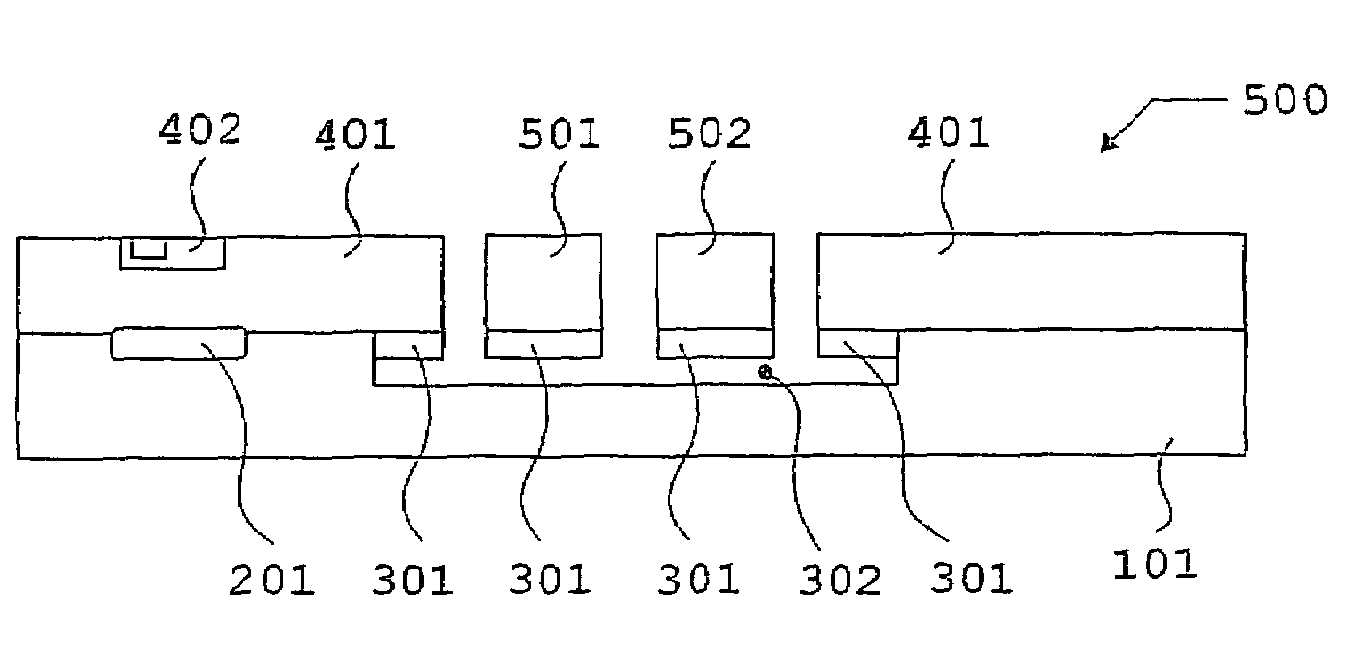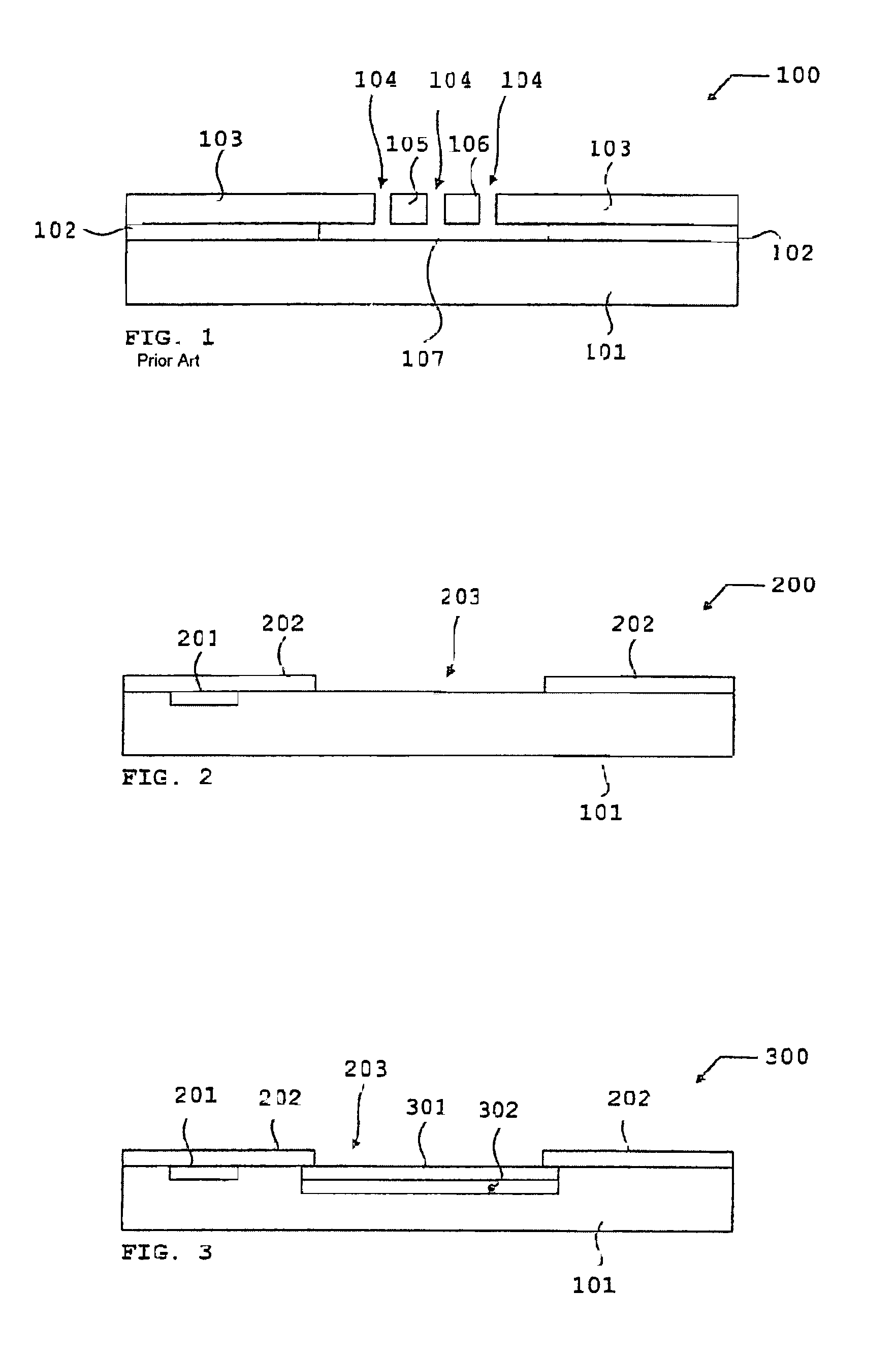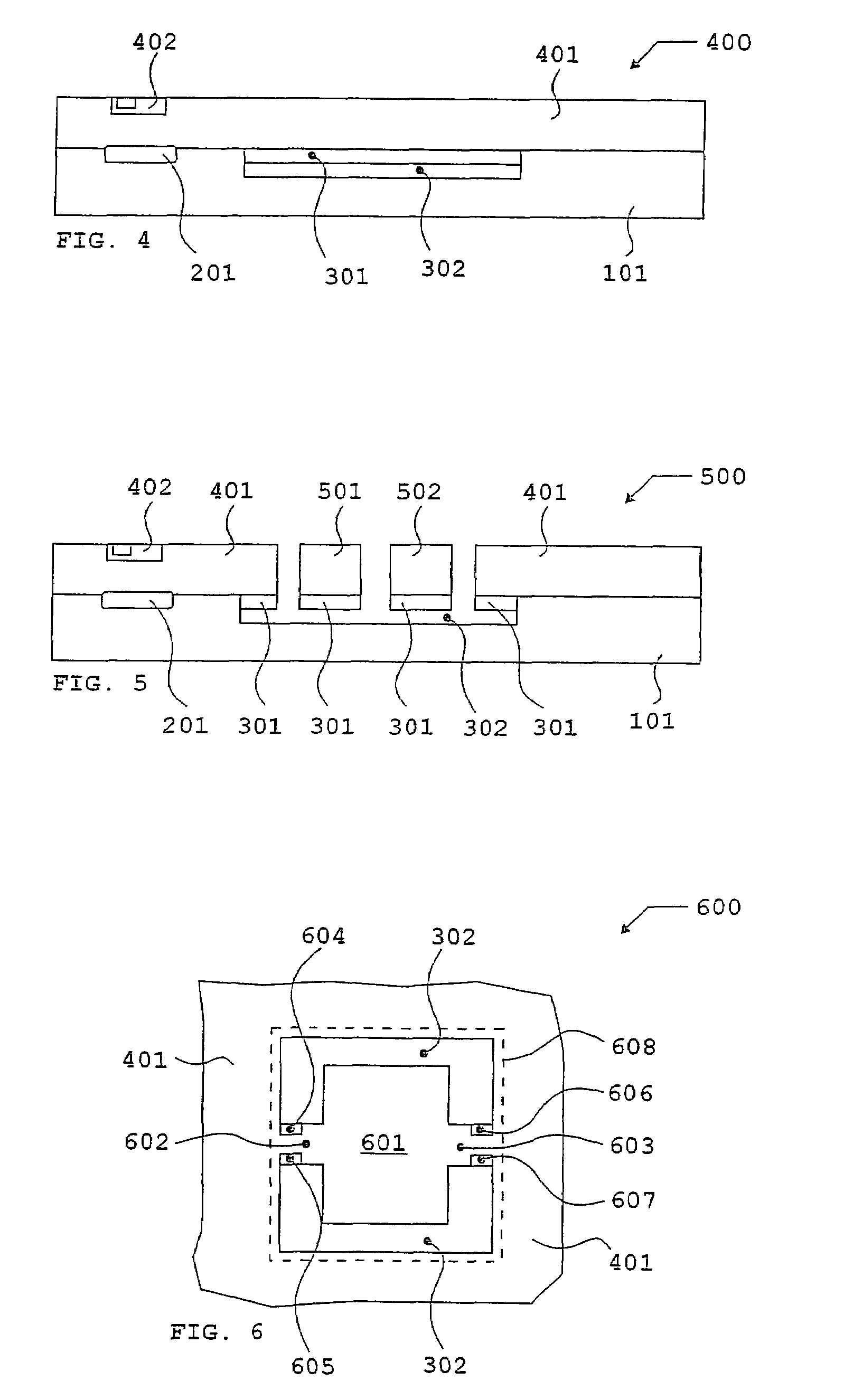Method for producing a semiconductor component having a movable mass in particular, and semiconductor component produced according to this method
- Summary
- Abstract
- Description
- Claims
- Application Information
AI Technical Summary
Benefits of technology
Problems solved by technology
Method used
Image
Examples
Embodiment Construction
[0046]FIG. 1 shows precursor 100 of a known acceleration sensor. Precursor 100 has a silicon substrate 101 of monocrystalline silicon, a sacrificial silicon oxide layer 102 deposited on silicon substrate 101 and a polysilicon layer 103 of polycrystalline silicon deposited on sacrificial silicon oxide layer 102. An etching mask (not shown) is applied to precursor 100 in a known way, so that etching openings 104 are not covered by the etching mask. The top side of precursor 100 shown in FIG. 1 is subsequently etched in a known way, thus creating, i.e., forming, mobile masses 105 and 106 in polysilicon layer 103 and a cavern, i.e., a cavity 107 in sacrificial silicon oxide layer 102, as shown in FIG. 1.
[0047]One disadvantage of this method of producing precursor 100 of a conventional acceleration sensor as shown in FIG. 1 is that the mobile masses have fluctuations in their mechanical properties in mass production due to the polysilicon structure. Furthermore, there are great fluctuati...
PUM
| Property | Measurement | Unit |
|---|---|---|
| Fraction | aaaaa | aaaaa |
| Fraction | aaaaa | aaaaa |
| Porosity | aaaaa | aaaaa |
Abstract
Description
Claims
Application Information
 Login to View More
Login to View More - R&D
- Intellectual Property
- Life Sciences
- Materials
- Tech Scout
- Unparalleled Data Quality
- Higher Quality Content
- 60% Fewer Hallucinations
Browse by: Latest US Patents, China's latest patents, Technical Efficacy Thesaurus, Application Domain, Technology Topic, Popular Technical Reports.
© 2025 PatSnap. All rights reserved.Legal|Privacy policy|Modern Slavery Act Transparency Statement|Sitemap|About US| Contact US: help@patsnap.com



